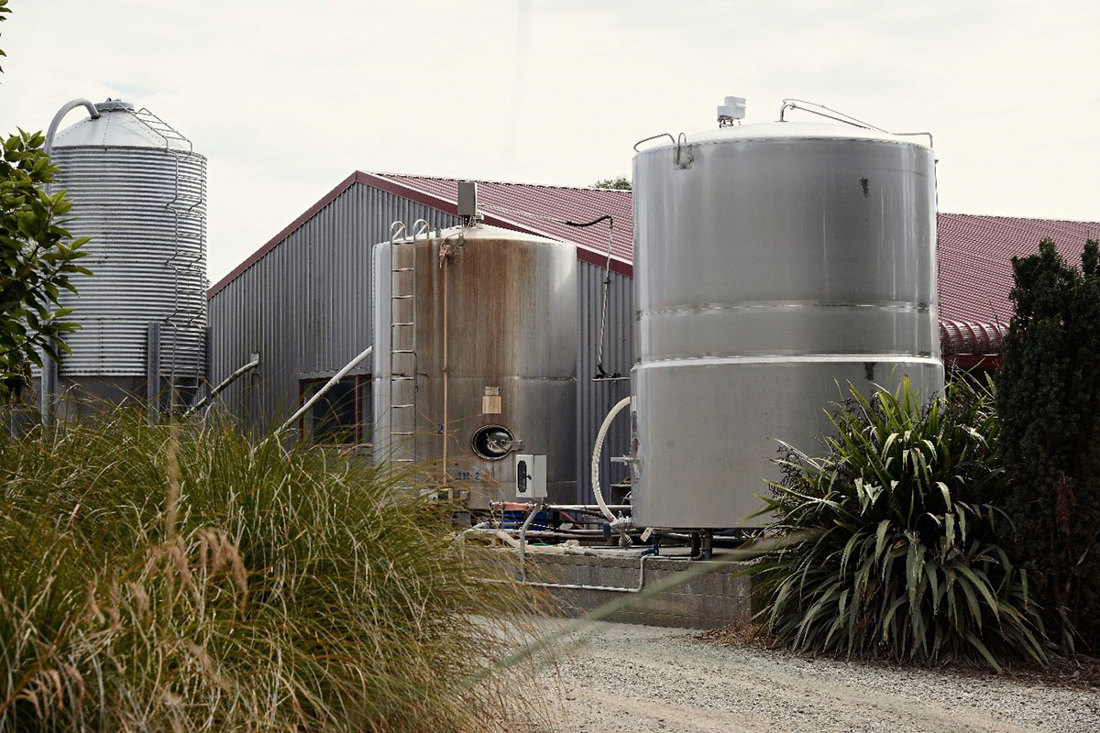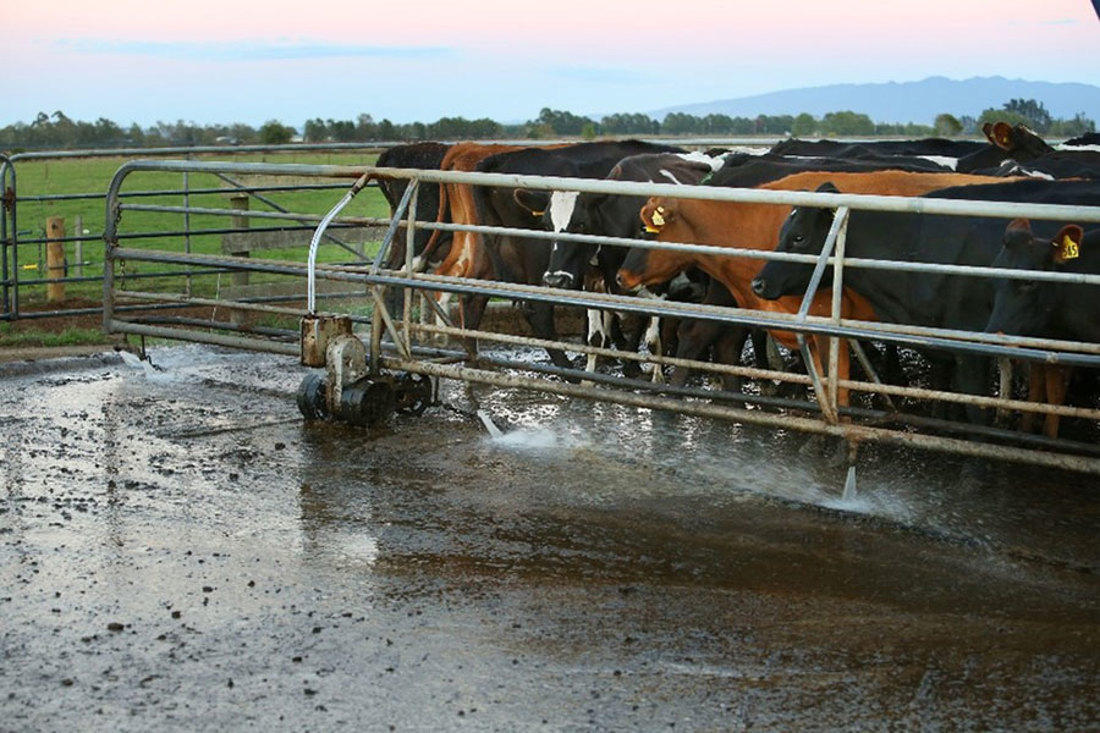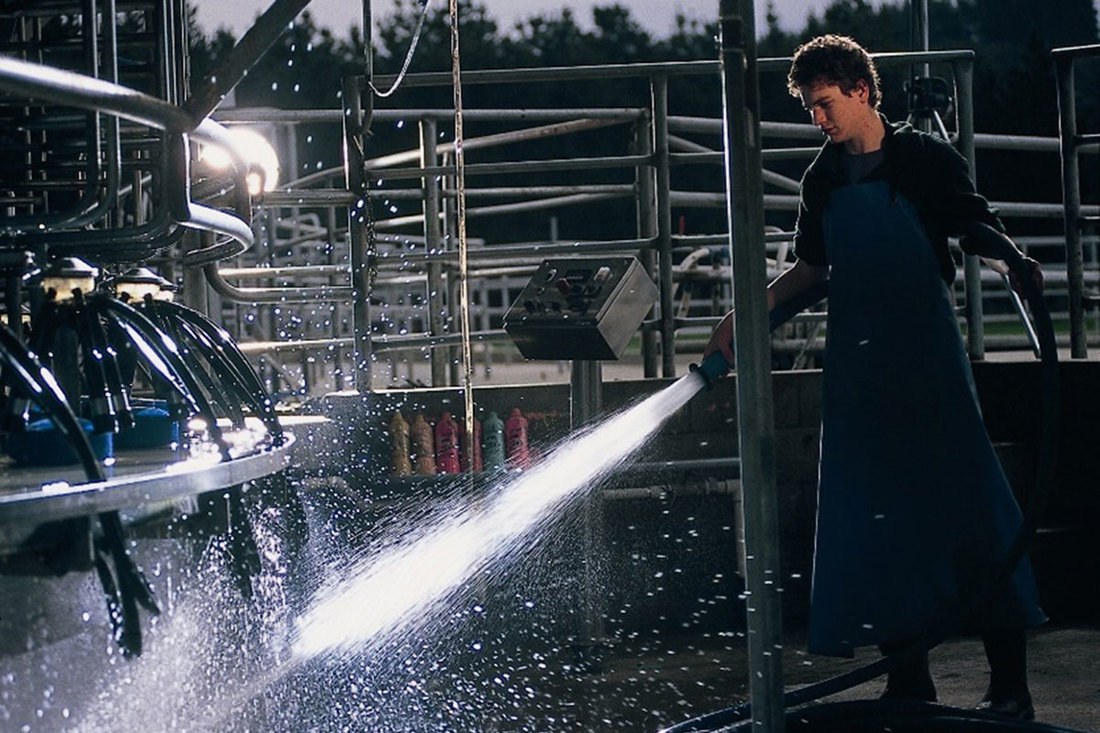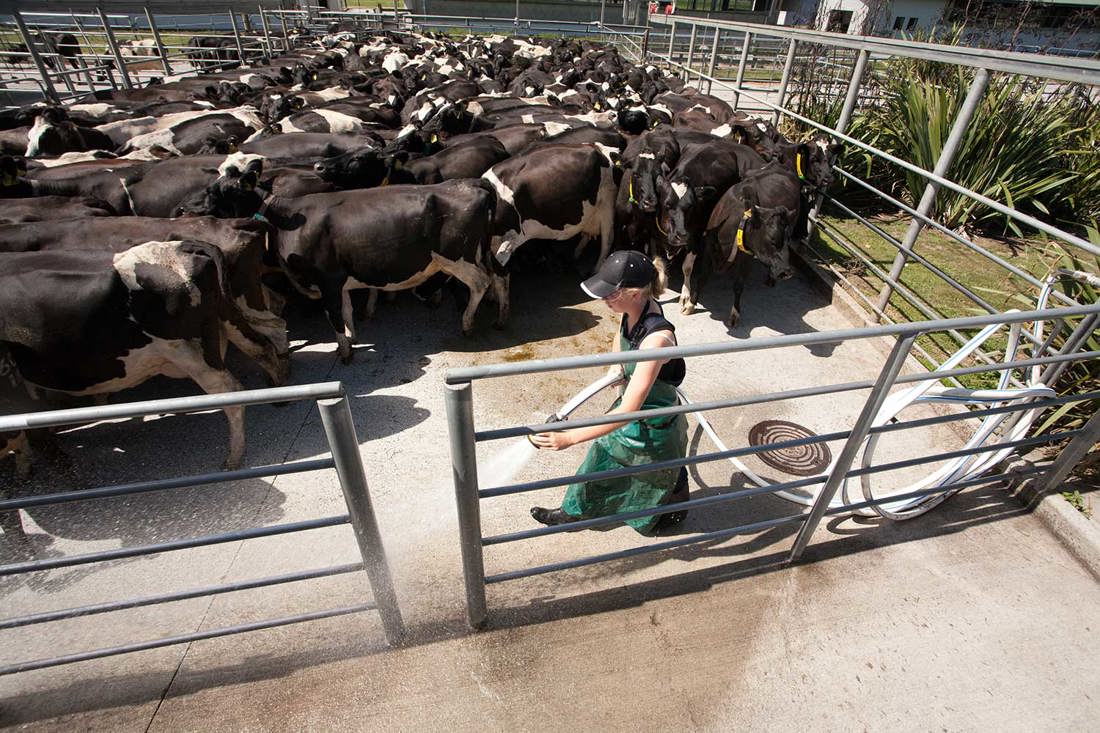Milking shed water use
4 min read
A lot of water is used in the milking shed. Efficient processes for milk cooling, vat wash, and yard hosing can add up to significant savings in water. This page provides tips for identifying opportunities to reduce water use and improve water efficiency during milking.

A tank close to the shed for storage of excess cooler water.

Under backing gate wash system.

Liquid ring vacuum pumps
Half of the water from liquid ring vacuum pumps can be recycled (if the temperature is less than 40°C) and half captured for yard wash. Check the manufacturer’s specifications for your pump as the temperature of the water needs to remain below specific values.
Rotaries 
Minimise the number of nozzles in the milking shed and consider using water blaster nozzles to reduce flows. Check nozzles for corrosion which can lead to increased water flow. Have smooth easy-to-clean surfaces in the milking shed and use scrapers to wipe effluent off the rotary to speed up wash down. Consider air blasts or other methods such as floating plastic toys, instead of water to get cows to back off.
Choosing the right system
Get water-use specifications from the manufacturer if installing a new system. Commercial yard washers and clean flood water washing are time efficient but can use a lot of water. Weigh up staff time, power costs and water use when choosing an efficient system for the milking shed.
Calculating effluent volumes
Reducing the volume of water used for yard wash down can significantly reduce effluent storage requirements. The Dairy Effluent Storage Calculator is a tool to determine the dairy effluent storage requirements for a dairy farm.
Capture and use rainwater
Rainwater from the dairy shed roof that drains onto the yard enters the effluent system. Capturing this rainwater by diverting the gutters into a tank reduces the volume of effluent you have to manage and store. It also provides water for yard wash-downs, reducing the amount of fresh water required from your main supply.

Track and Yard washdown by farm worker during milking.
Look out for overflows
Be vigilant to tanks or cylinders losing water and get everyone on farm into the habit of watching for problems. Installing an auto shut-off wherever possible will eliminate this risk of water loss.
Daily check on pressure of water at the taps and hoses
Low water pressure at taps and hoses can alert you to water loss in the system. On some farms, water pressure in the house may be affected by water use out on the farm. This can be a helpful sign any time day or night.
Tank floats
Tank floats should be set far enough down from the top that overflows are avoided. Check your tanks and make adjustments where necessary.
Now’s the perfect time to check in, plan, and set up for a strong season. We’ve pulled together smart tips and tools to help you stay ahead all winter long.
Whether you prefer to read, listen, or download handy guides, we’ve got you covered with trusted tools to support your journey every step of the way.
Put our proven strategies and seasonal tools to work. Boost production, support animal health and watch your profits hum.
Tools that are backed by science, shaped by farmers and made for this season.
That’s Summer Smarts.